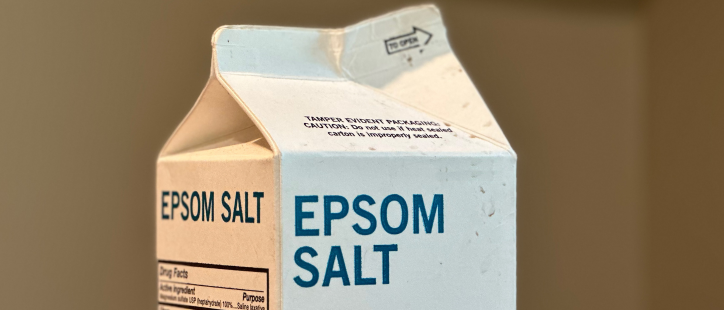A well-functioning plumbing system relies on a network of pipes, vents, and drains to ensure the smooth flow of water and prevent issues like backups and slow drainage. Among the crucial components of this system is the drain vent pipe. This vertical pipe, often referred to as a plumbing vent or vent stack, plays a vital role in maintaining proper air pressure in your plumbing system, allowing wastewater to flow freely. When a drain vent pipe becomes clogged or obstructed, it can lead to a range of plumbing problems and inconvenience. Recognizing the signs of a clogged drain vent pipe is essential for addressing the issue promptly and preventing more significant plumbing issues. In this helpful article, we’ll explore the common symptoms of a clogged drain vent pipe and discuss why it’s crucial to address this problem.
What Is a Drain Vent Pipe, and Why Is It Important
Before delving into the symptoms of a clogged drain vent pipe, let’s understand its role in your plumbing system:
- Ventilation and Pressure Equalization: Drain vent pipes extend from your plumbing system to the exterior of your home, typically through the roof. They provide ventilation and equalize air pressure within the plumbing system, allowing wastewater to flow smoothly. Without proper ventilation, wastewater can flow sluggishly or become trapped, leading to backups and odors.
- Preventing Siphonage: Vent pipes prevent siphonage, a phenomenon where water flowing down a drain creates a vacuum that can siphon water from traps, such as those in toilets and sinks. This can lead to unpleasant odors and, in some cases, dangerous sewer gas exposure.
- Air Admittance Valves (AAVs): In some plumbing systems, air admittance valves are used instead of traditional vent pipes. AAVs allow air to enter the system when needed but prevent sewer gas from escaping, maintaining a healthy and odor-free environment.
Signs of a Clog
A clogged drain vent pipe can manifest in various ways, and recognizing these symptoms is crucial for addressing the issue promptly. Here are the common signs of a clogged drain vent pipe you should be on the lookout for:
1. Slow Draining Fixtures:
If multiple fixtures in your home, such as sinks, showers, and toilets, are draining slowly, it may be a sign of a clogged drain vent pipe. The slow drainage occurs because the water is struggling to flow freely without proper venting.
2. Gurgling or Bubbling Drains:
When you use a fixture like a sink or toilet, you may hear gurgling or bubbling sounds from nearby drains. These sounds indicate that air is being pulled through traps due to negative pressure, often caused by a clogged vent pipe.
3. Unpleasant Odors:
A clogged vent pipe can trap sewer gases in your plumbing system, leading to foul odors in your home. These odors can manifest near drains, toilets, or even through your home’s ventilation system.
4. Backups and Overflows:
One of the more severe consequences of a clogged vent pipe is backups and overflows. When wastewater can’t flow freely due to improper venting, it can back up into fixtures, causing toilets to overflow or sinks to back up.
5. Water Hammer:
Water hammer is a sudden, loud banging noise that occurs when you turn off a faucet or fixture. It can result from pressure imbalances within your plumbing system, which a clogged vent pipe can contribute to.
6. Slow Toilet Tank Refill:
If your toilet tank takes longer than usual to refill after flushing, it may be due to a clogged vent pipe. The reduced air pressure can slow down the water flow.
7. Vent Stack Obstructions:
In some cases, physical obstructions or debris may block the vent stack on your roof. If you notice objects or debris obstructing the vent stack, it’s a clear indication that the vent pipe needs attention.
Why It’s Crucial to Address a Clogged Drain Vent Pipe
Ignoring or neglecting a clogged drain vent pipe can lead to a range of serious plumbing issues and health hazards. Here’s why it’s crucial to address this problem promptly:
1. Preventing Sewer Gas Exposure:
Sewer gases, which include methane and hydrogen sulfide, are not only foul-smelling but also harmful to human health. A clogged vent pipe can trap these gases within your plumbing system, creating an unhealthy and potentially dangerous environment.
2. Avoiding Wastewater Backups:
A clogged vent pipe can lead to wastewater backups, resulting in unpleasant and unsanitary conditions in your home. Cleaning up after such backups can be costly and time-consuming.
3. Minimizing Water Damage:
Backups and overflows caused by a clogged vent pipe can lead to water damage to your property, including walls, ceilings, and flooring. Repairing this damage can be expensive and disruptive.
4. Preventing Structural Damage:
Excess moisture from backups and overflows can weaken your home’s structural components, leading to costly repairs and compromises to its integrity.
5. Maintaining Proper Plumbing Functionality:
A properly functioning drain vent pipe is essential for the efficient operation of your plumbing system. Addressing clogs promptly ensures that your fixtures and appliances work as intended.
Contact Maffei Services
Recognizing the signs of a clogged drain vent pipe is essential for maintaining a healthy and functional plumbing system in your home. A clogged vent pipe can lead to slow drainage, gurgling sounds, odors, backups, and other plumbing problems. Addressing the issue promptly with the help of a professional plumber can prevent more significant plumbing issues, water damage, and health hazards. Regular plumbing maintenance and inspections can also help identify and prevent clogs in your drain vent pipe, ensuring that your plumbing system operates smoothly and efficiently.
If you suspect that your drain vent pipe is clogged, it’s advisable to seek professional help from the licensed plumbers at Maffei Services. Our plumbing experts have the tools and knowledge to diagnose and resolve the issue efficiently and safely. We can also inspect your plumbing system to identify any potential underlying problems that may have contributed to the clog.



